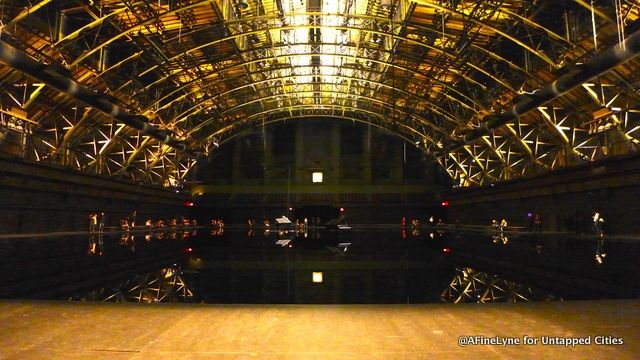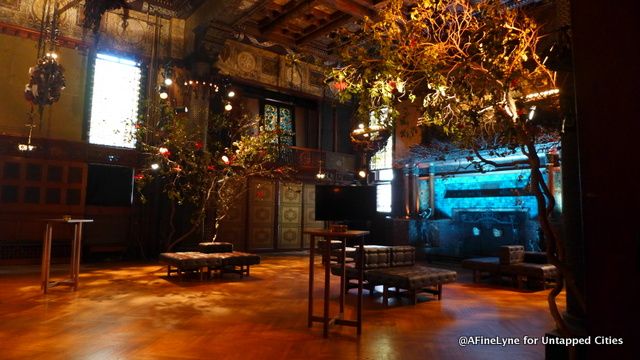Last-Minute NYC Holiday Gift Guide 🎁
We’ve created a holiday gift guide with presents for the intrepid New Yorker that should arrive just in time—


The Park Avenue Armory, known for their larger-than-life art installations has put together a blend of architecture and music that is sure to delight even those who think they’ve seen it all. It began in a restaurant in Paris when the Armory’s artistic director, Alex Poots introduced the Scottish conceptual artist Douglas Gordon to the French pianist Helene Grimaud. It was in the sharing of their thoughts that this installation Tears Become….Streams Become was born that has literally flooded the Park Avenue Armory.

This ambitious project has a familiar engineering firm in Arup, who was the lead consultant on the new Fulton Center subway in lower Manhattan. It was Arup that had the task of figuring out how to effectively bring the water in, surrounding the pianos. The installation required that the 122,000 gallons of water, which would be occupying 33,000 square feet, would slowly flood the part of the room where Ms. Grimaud would be performing. By the end of her performance, about an hour, both the artist and her instruments would be as if floating on a pool with reflections from every angle.
At the end of each performance, the water retreats back through the PVC pipes and into the nine holding tanks, well out of the audiences sight. Pianos sitting so close to water was another challenge. The solution was to keep the water at a constant temperature of between 50 and 55 degrees, with surrounding air temperature of between 70 and 76 degrees. This resulted in zero humidity to the great relief of Steinway & Sons–who donated both the grand and the computerized pianos.

We enhanced the lighting on our first two photos to allow you to see the interior installation space. But when you enter the 55,000 square feet of Drill Hall, it is so dimly lit that a minute to adjust your eyes is quite necessary, since you will find the reflection of the ceiling in the pond a bit disorienting. These two photos (up and down) are more in line with the true lighting. At the far end, closer to the pianos, there is broad board seating on three sides–a very welcoming place to sit and yes, reflect. There were quite a few people doing just that while we were there.

Ms. Grimaud will perform on ten evenings through December 21st. The water installation will be on view during the day through January 4th. We would like to mention that the very talented Alex Poots will be moving on next September to become the first artistic director and chief executive of the Culture Shed–a new Arts Center that will extend from 30th Street to 31st Street and run between 10th and 11th Avenues. Completion for that project is expected in 2018.

This is quite the opposite of our typical bells and whistles installation, offering us a dimly lit, dreamy and meditative–seemingly endless environment. The Park Avenue Armory really knows how to put on a show. Not quite ready to come out of this fantasy? A light snack can be had in one of the many enchanting rooms and a chance to view more of what was the Seventh Regiment of the National Guard, built in 1861. You might recognize this room from scenes in Boardwalk Empire.

The Armory was designed by architect Charles W. Clinton who later became a partner at Clinton & Russell, the architects of the Apthorp Apartments and the now demolished Astor Hotel. Below is interior space, walking from Drill Hall toward the entrance. It served as both a military facility and a social club and the rooms were designed by artists that included Louis Comfort Tiffany and Stanford White. Members of the Armory were some of New Yorks most prestigious families including the Vanderbilts, Roosevelts, Van Rensselaers and Harrimans–giving way to the name “The Silk Stocking” Regiment.

The Park Avenue Armory is located at 643 Park Avenue at 67th-68th Streets.
Contact the author at AFineLyne.
Subscribe to our newsletter